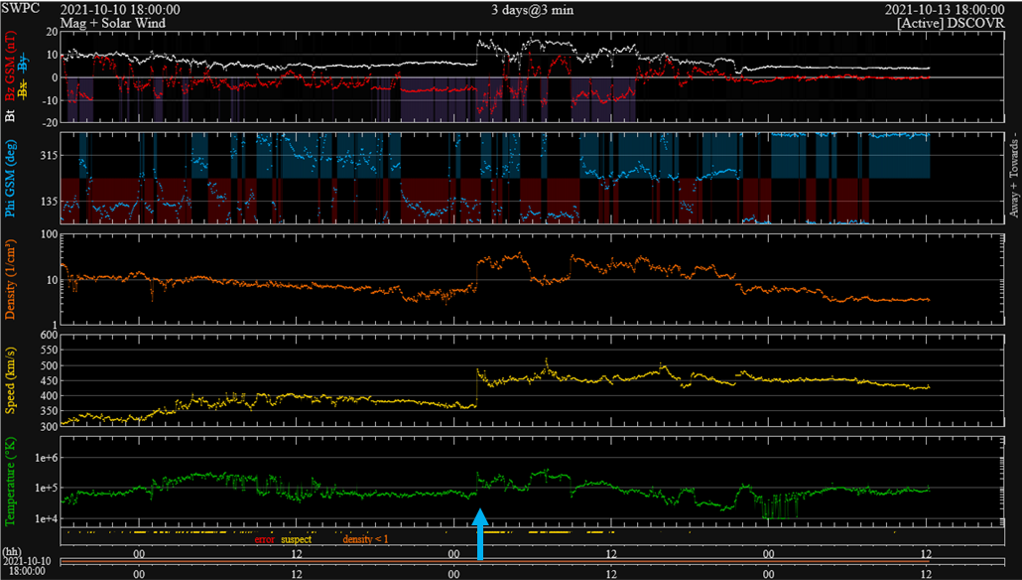NOAA 2882 rounded the northeast solar limb on 3 October as a large but symmetric sunspot group. It was flare quiet, until a small bipolar region emerged nearby and to the north of the main spot on 7 October. The magnetic interaction resulted in a number of C-class flares, but more importantly an M1.6 flare on 9 October (peak at 06:38 UTC) while NOAA 2882 was close to the central meridian. The SDO images underneath show the sunspot region about an hour after the flare peak in x-ray. On the left is the white light image showing the sunspot group NOAA 2882, and in the middle is an extreme ultraviolet (EUV) image obtained via the AIA 094 filter, showing the area at a temperature of several million degrees. Aside some post-flare coronal loops over the main blast area (northwest, or "upper right" of the main spot), the EUV image also shows a cusp (flamelike structure) to the northeast (upper left) of the main spot. Though both features testify of the magnetic reconnection that took place, the cusp is only visible in high-temperature filters, i.e. it was not visible in EUV imagery with the AIA 171 filter (right image) that shows the corona at lower temperatures of about 700.000 degrees.
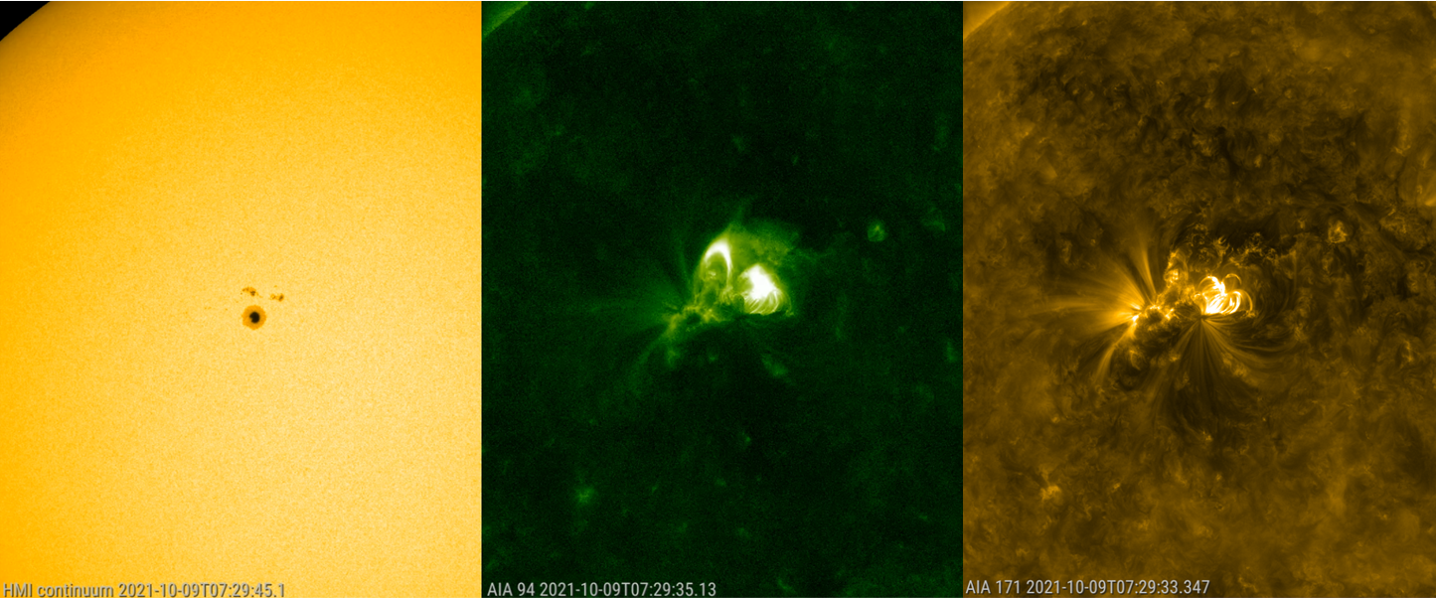
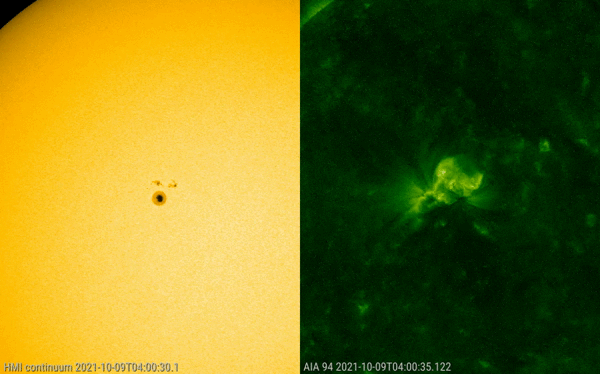
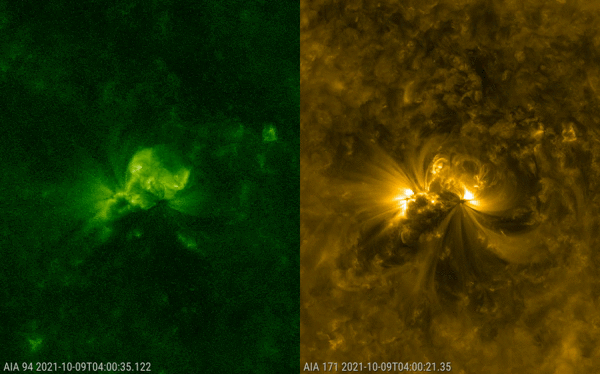
Cusps and post-flare coronal loops are indications that a coronal mass ejection (CME) might have been associated with the M1 flare. Further proof came from images with SDO/AIA 193 (temperatures of about 1.25 million degrees) showing coronal dimming (a temporary darkening in the solar corona, also known as "transient coronal hole") to the north of the region as well as the presence of a coronal wave (see this STCE Newsitem for more info) emanating from the flare source location. The image underneath left shows the solar corona as seen with the AIA 193 filter, whereas the annotated image to the right is a difference AIA 193 image, i.e. one image subtracted from the other thus enhancing the details in these EUV images. The outlines of the coronal wave are highlighted with blue arrows on the difference image. Note how the coronal wave mimicks the boundaries of the elongated coronal holes to the south, southwest and northwest of the erupting region. The magnetic fields of the coronal holes effectively act as a magnetic wall against the expanding coronal wave, often giving it an asymmetic shape as is the case here.
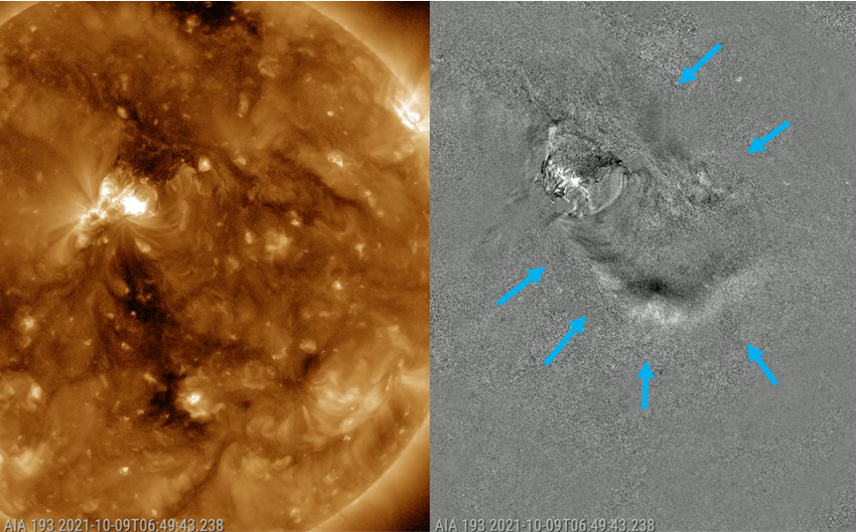
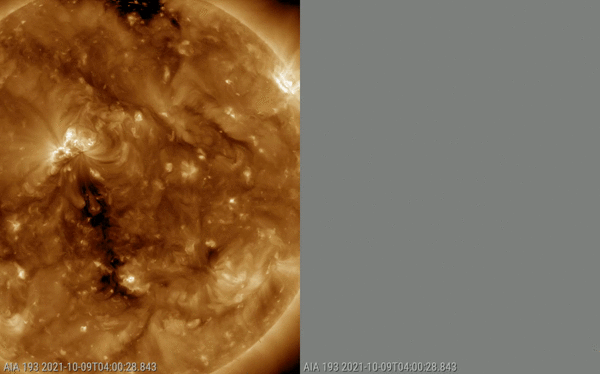
Sure enough, a CME was observed in the available coronagraphic images taken by coronagraphs on board the SoHO and STEREO-A spacecraft. This can be seen in the compilation underneath, with the left one taken by STEREO-A/COR2 which is currently trailing the Earth by about 38 degrees (so the Earth in that image is to the right). The SoHO/LASCO C2 difference images on the right (CACTus) show a clear and obvious halo CME (the more or less symmetric ring around the Sun) indicating this CME is directed straight to Earth. Space weather forecasters at the SIDC measured the projected speed (plane-of-the-sky) to be 692 km/s, with the true speed estimated to be around 950 km/s. Taking into account low values for the solar wind background, the transit time to Earth was calculated to be about 62 hours, and that the arrival at Earth would be early on 12 October, around 01:00 UTC with an uncertainty of 12 hours.
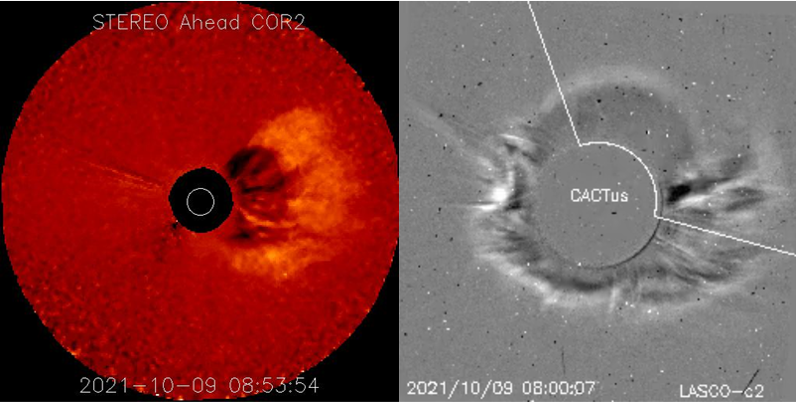
As it turned out, this was a very accurate prediction, as DSCOVR recorded the shock of this interplanetary CME on 12 October at 01:45 UTC. The solar wind speed (yellow curve in graph underneath) jumped from about 365 to 490 km/s, while the magnitude of the Interplanetary Magnetic Field (IMF, white curve) jumped from about 5.5 to 14.5 nT. Bz (red curve) was below -5 nT most of the time since 0h UT, with a minimum of -16 nT. These conditions resulted in a minor (K Dourbes = 5) to moderate (Kp = 6) geomagnetic storm. The Dst index reached -53 nT, so barely making it into the moderate category. See the STCE SWx Classifications page for details. Aurora were seen in Alaska and the northern USA states, Canada, Scandinavia and northern Scotland, featuring mostly the typical greenish color. Images are available at https://spaceweathergallery.com/aurora_gallery.html
